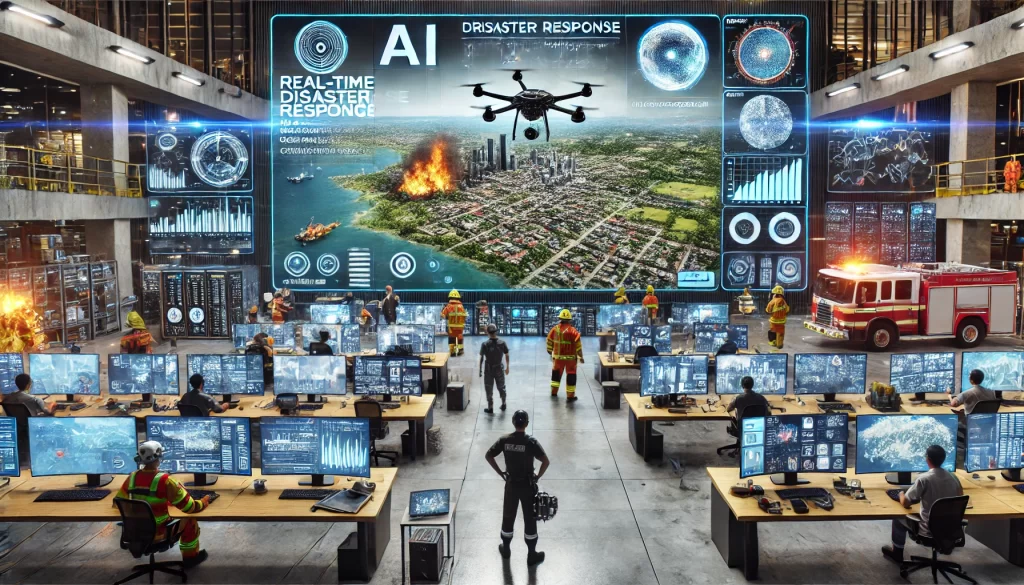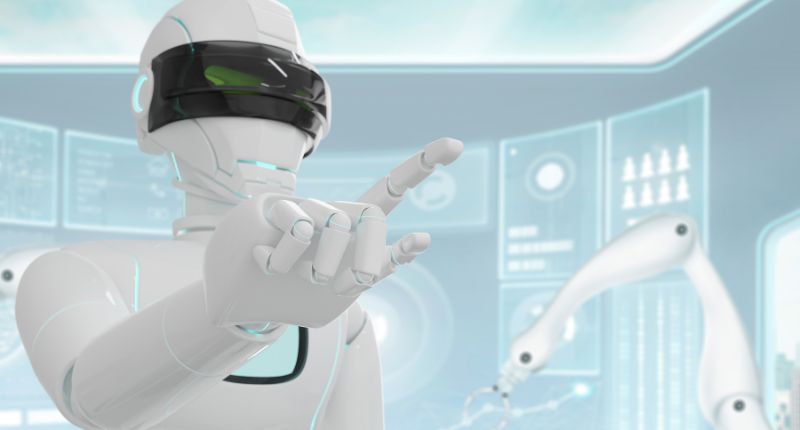The Role of AI in Disaster Response and Recovery
Disasters, both natural and man-made, pose significant challenges to communities and governments worldwide. The ability to respond quickly and efficiently can mean the difference between life and death. Artificial Intelligence (AI) is playing a crucial role in disaster response and recovery, helping emergency teams make faster, data-driven decisions to save lives and minimize damage.
This article explores how AI in disaster response and recovery is revolutionizing emergency preparedness, real-time crisis management, and post-disaster rehabilitation.
How AI Enhances Disaster Response
AI-powered tools and technologies are transforming disaster response in multiple ways, from early warning systems to rapid rescue operations. Here’s how AI is making a difference:
1. AI-Powered Early Warning Systems
AI enhances disaster preparedness by predicting and detecting disasters before they strike.
✅ How AI predicts disasters:
- Machine learning models analyze weather patterns to predict hurricanes, floods, and wildfires.
- Seismic activity analysis helps forecast earthquakes and potential aftershocks.
- AI-powered satellite imagery detects signs of drought, deforestation, and other environmental risks.
🔗 Read about AI in early warning systems
2. AI in Real-Time Disaster Monitoring
AI-driven technologies track disasters in real-time, providing vital data to emergency teams.
✅ Key AI applications in disaster monitoring:
- Drones with AI-powered cameras survey disaster-affected areas and assess damage.
- Computer vision algorithms analyze satellite images to determine the extent of destruction.
- AI-powered chatbots and social media analysis track crisis trends and locate people in need of assistance.
3. AI for Emergency Response and Rescue Operations
During a disaster, AI assists in locating survivors, optimizing rescue efforts, and reducing response time.
✅ How AI helps in rescue missions:
- AI-guided search and rescue robots navigate hazardous environments to locate trapped individuals.
- Facial recognition technology helps identify missing persons in disaster zones.
- Predictive analytics optimize resource allocation, ensuring medical aid and supplies reach the hardest-hit areas.
4. AI in Crisis Communication and Coordination
AI-powered systems enhance communication between emergency responders, relief agencies, and affected communities.
✅ How AI improves crisis coordination:
- AI-driven chatbots provide real-time updates and assist people in distress.
- Automated translation tools break language barriers for better communication in international crises.
- AI-powered command centers analyze incoming data to prioritize rescue efforts efficiently.
The Role of AI in Disaster Recovery
After a disaster, rebuilding communities and restoring infrastructure require strategic planning. AI speeds up recovery efforts and helps affected populations rebuild their lives.
1. Damage Assessment and Recovery Planning
AI accelerates post-disaster recovery by analyzing damage and predicting reconstruction needs.
✅ AI applications in recovery planning:
- Satellite imagery and AI models assess structural damage to homes, roads, and buildings.
- AI-powered simulations predict economic impacts and recommend rebuilding strategies.
- AI-driven supply chain management ensures efficient distribution of relief materials.
2. Mental Health and Trauma Support
AI-driven mental health support tools help disaster survivors cope with trauma.
✅ AI applications in mental health recovery:
- AI-powered virtual therapists provide psychological support through online platforms.
- Natural language processing (NLP) tools detect signs of trauma in conversations and recommend counseling resources.
- AI-driven telemedicine connects survivors with mental health professionals remotely.
3. AI in Infrastructure Reconstruction
AI-driven smart technology supports the rebuilding of resilient communities after a disaster.
✅ How AI supports rebuilding efforts:
- AI-powered urban planning tools help design disaster-resistant cities.
- Autonomous construction robots speed up rebuilding efforts.
- AI-driven climate modeling predicts future disaster risks to inform better infrastructure development.
Challenges and Ethical Considerations of AI in Disaster Response
While AI offers incredible benefits in disaster response and recovery, challenges remain:
1. Data Privacy Concerns
AI-driven monitoring tools collect vast amounts of personal data. Ensuring ethical data use and protection is essential.
2. Dependence on Technology
Over-reliance on AI can be risky if technical failures occur during emergencies.
3. Ethical Use of AI in Surveillance
Balancing AI-powered disaster monitoring with privacy rights is a critical issue for policymakers.
4. Access to AI Resources
Developing countries may lack the infrastructure needed to deploy AI-driven disaster response systems effectively.
Future of AI in Disaster Response and Recovery
As AI technology advances, disaster response efforts will become even more efficient. Here’s what the future holds:
1. AI-Integrated Smart Cities
AI-driven smart cities will use real-time data to improve disaster resilience and emergency preparedness.
2. AI-Powered Humanitarian Assistance
AI will enhance international relief efforts, making humanitarian aid more effective and accessible.
3. Predictive AI for Climate Change Disasters
AI will help governments prepare for climate-related disasters by modeling future scenarios and implementing proactive measures.
4. AI and Robotics in Disaster Management
Advanced AI-driven robots will assist in high-risk disaster zones, minimizing human exposure to danger.
Conclusion
The role of AI in disaster response and recovery is becoming increasingly significant. AI-powered technologies enhance emergency preparedness, improve crisis management, and accelerate recovery efforts, ultimately saving lives and rebuilding communities.
While challenges remain, the potential of AI to revolutionize disaster response is undeniable. By integrating AI-driven solutions with human expertise, we can create a future where disasters are managed more efficiently, with faster response times and improved recovery efforts.



I enjoyed reading this article. Thanks for sharing your insights.